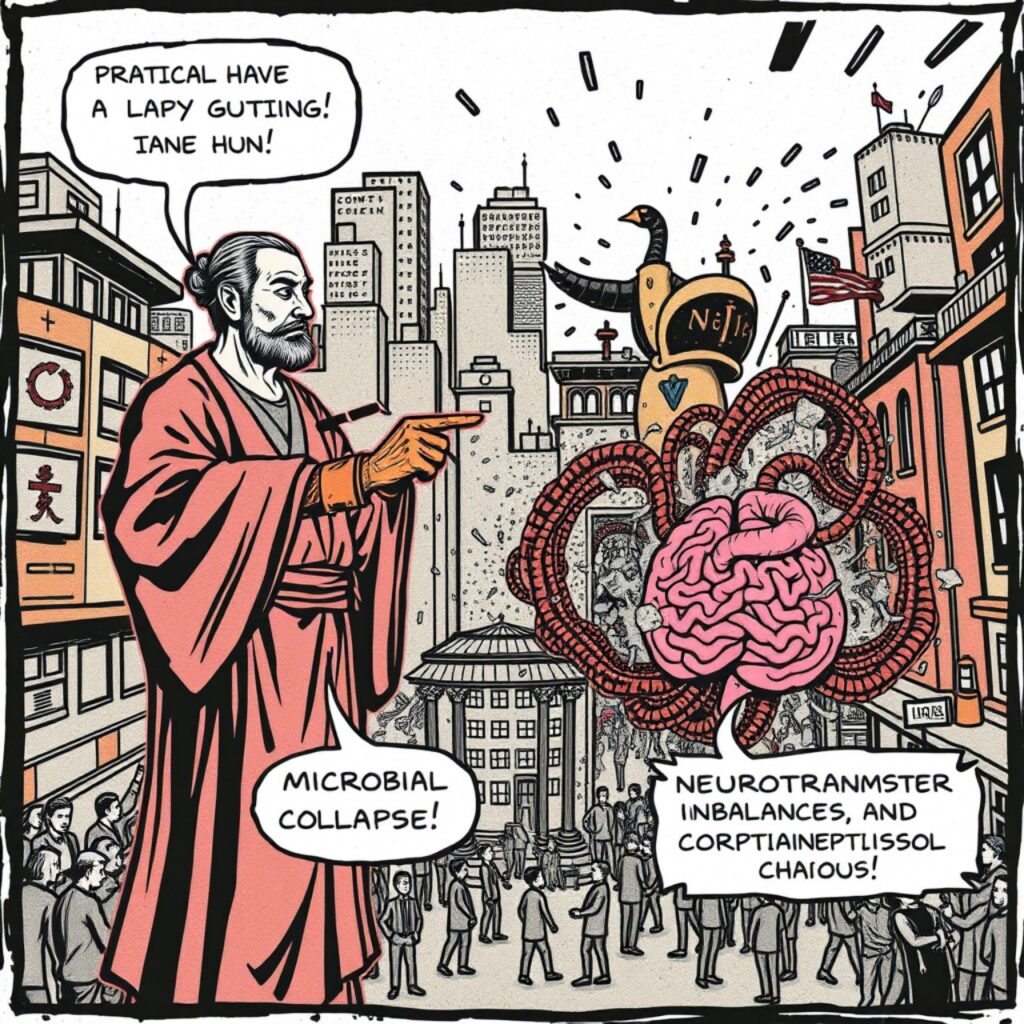ADHD & Autism: Divergent Reactions to the Same Terrain Collapse?

How two opposite-seeming conditions might be adaptive flipsides of the same biological coin.
The Mystery of Opposites
On the surface, ADHD and autism couldn’t seem more different.
- The ADHD child is in motion, restless, chasing stimulation, outwardly chaotic.
- The autistic child is inward, repetitive, withdrawn, seemingly shielded from sensory overload.
One craves contact, the other avoids it. One “can’t sit still,” the other “won’t engage.”
And yet… they share striking biological overlaps.
The Shared Biological Terrain
Both ADHD and autism are now understood to sit on what researchers increasingly call a neuroinflammatory spectrum. They are not fixed categories but adaptive responses to internal chaos:
- Microbial collapse: Both conditions show dramatic reductions in key gut microbes, especially the “Love Trio” — Akkermansia, Faecalibacterium, and Roseburia.
- Mast cell overactivation: Heightened allergic-type immune responses and histamine intolerance are common in both.
- Purinergic signaling disruptions: Suramin and other P2X/P2Y inhibitors have shown benefit in both ADHD and autism models.
- Mitochondrial dysfunction: Impaired cellular energy production is increasingly documented across the spectrum.
This is not a coincidence. It suggests they arise from a shared internal disturbance — a terrain collapse — but manifest in opposite ways.
- Microbial collapse: Both conditions show dramatic reductions in key gut microbes, especially the “Love Trio” — Akkermansia, Faecalibacterium, and Roseburia.
Two Polarized Survival Modes
Here’s the emerging hypothesis:
When the body’s internal terrain collapses (due to early antibiotic use, lack of seeding at birth, vaccination stressors, EMF exposure, toxin load, etc.), the child’s nervous system adapts — but in divergent directions:
- ADHD is the escape response. Hyperactive. Impulsive. Alert. Always seeking novelty, movement, or stimulation. This may reflect a sympathetic dominance, an attempt to outrun or override a system perceived as unsafe. It’s a flight-forward mechanism.
- Autism is the defense response. Withdrawal. Repetition. Shutdown. A collapse inward. This may reflect a parasympathetic freeze mode, a system retreating from danger, lowering input to manage overwhelming threat signals. It’s a hunker-down mechanism.
Same root problem — different adaptive expressions.
The Love Trio Missing in Both
Multiple studies (e.g., Kang et al., 2013; Sharon et al., 2019) have shown that:
- Faecalibacterium is nearly absent in many children with ASD and reduced in ADHD.
- Akkermansia levels are depleted in both.
- Roseburia — a producer of the calming, immune-modulating short-chain fatty acid butyrate — often vanishes.
These microbes are not just passengers. They modulate serotonin, dopamine, and GABA — neurotransmitters central to focus, emotion, and connection.
Their absence changes behavior.
Dopamine: The Axis of Divergence
Dopaminergic tone may help explain the split.
- In ADHD, dopamine is chronically low or dysregulated in the prefrontal cortex. This creates a state of under-focus, low reward sensitivity, and impulsivity. Microbial cues that support dopamine production (via tyrosine metabolism or SCFAs) are often missing.
- In autism, dopamine pathways may be hyper-focused in narrow circuits (causing intense repetition or specialized interests) but poorly regulated across broader connectivity networks. There’s often rigid behavior but low adaptability.
Both arise from disrupted dopamine ecology — different outputs, same wrecked input system.
Suramin: A Shared Keyhole
Suramin, the old anti-parasitic drug that blocks ATP danger signaling (P2X/P2Y receptors), has shown benefit in both conditions:
- Autism: Naviaux et al. (2017) found transient but profound social and cognitive improvements in children with ASD.
- ADHD: Preclinical models (e.g., rat studies showing reduction in hyperactivity and impulsivity with P2X antagonists) hint at similar pathways.
This points to shared upstream dysfunction: the body stuck in an alarm state, cellular signals of distress (e.g., extracellular ATP) never turned off.
When that signal is blocked, behavior shifts.
Divergence Is Not Destiny
What emerges from this model is a simple, powerful idea:
ADHD and autism are not broken brain types — they are survival modes calibrated to an internal environment that feels unsafe.
This opens a radical new frontier of thinking:
- What if terrain restoration — not behavioral management — is the path forward?
- What if the child’s brain is working perfectly, just responding to corrupted inputs?
What if the divergence between ADHD and autism is plastic, modifiable, and reversible?
The “Muddy Middle” — and Real Life
Not all children fall neatly into ADHD or autism.
Many sit in the in-between — speech delays, sensory issues, anger, zoning out, learning difficulties.
These too, we propose, reflect terrain signals, not fixed defects.
The Road Forward
- Identify the microbial and immune signatures unique to the child.
- Rebuild the terrain: Love Trio keystone microbes, reduce mast cell activation, support mitochondria, quiet purinergic chaos.
- Reframe the diagnosis not as identity but adaptive signaling.
When the terrain shifts, so does the behavior.
This is the essence of our working model.
🧠 ADHD runs. Autism hides. But both are trying to survive something inside.
📎 Next: [The Missing SCFAs: Butyrate, GABA, and the Chemistry of Connection]
